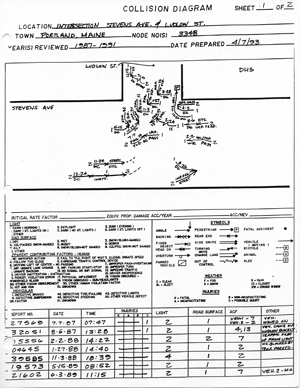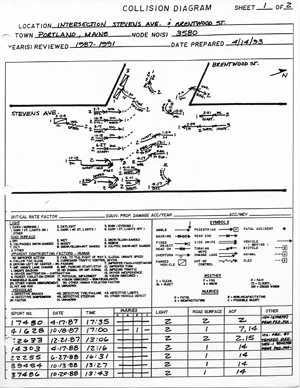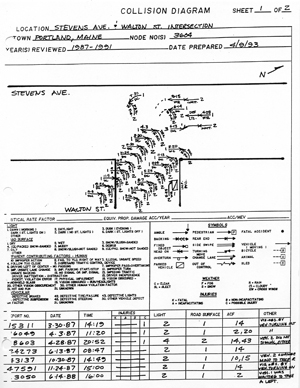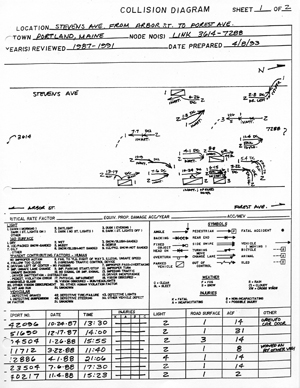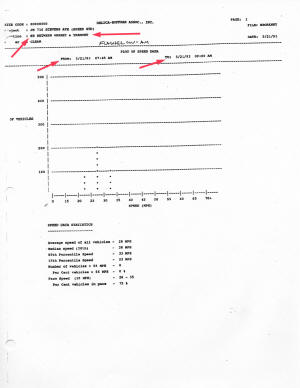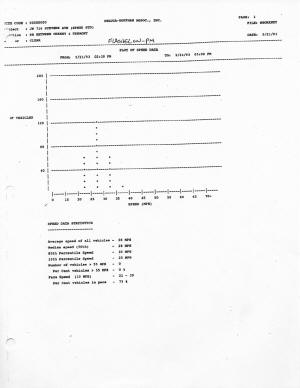SAP
Speeding and Accidents -
Vehicle
Accidents
Stevens Avenue Project :
Speeding and Accidents 1993
VEHICLE ACCIDENTS
1993 Stevens Avenue Pedestrian Study Phase I --Data Collection and
Problem Identification Report is here.
1998 PACTS Phase I Report Final Monitoring Report is here.
1998 Phase I Final Technical Supplement Appendix III Accident data is here.
click for larger image
| EXPLANATION: At right is a collision
diagram used by the 1993 Phase I Report writers to portray
the vehicle accidents that occurred at Ludlow and Stevens
between 1987-1991. The long red arrow is pointing to the lone pedestrian accident, explained on the previous page (here). The short red arrows to the upper left bottom refer to the "conditions" block in the lower right. To explain the data: Look at the first accident diagram on the bottom of the diagram block, over the yellow line. We can see Dec. 24, 1990, there was a 3-car accident where car #3 was making a left turn, whereupon it was struck by car # 1, which was hit by car # 2. It was daytime, and the road was dry. In the "ACF" column, the "additional contributing factor" was driver inattention, comparing the ACF number to the chart at left. This is denoted in the second page of the list. There were four accident areas officially presented as evidence of a speeding-accident problem on Stevens. Note that none of these are in the Longfellow School Zone and that once again, speeding is not the problem! Click on image for PDF file on each: |
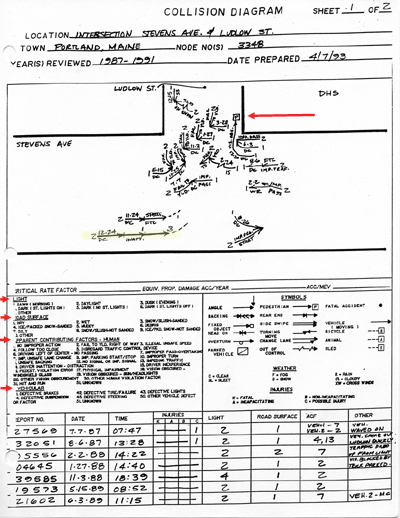 |
Because of the confluence of the signal light at Stevens and Pleasant, and the crossing guard in front of the school, when school children are in front of the schools traffic may be able to get up to 15 MPH if it’s lucky. 5-10 MPH, just where it should be, is more likely.
The crossing guard didn't have 4 complaints lodged against him in 1997 by the drivers of the busses he was slowing down, for nothing. They were running late.
DPW head William Bray stated to the Portland Press Herald that accidents had decreased after the speed tables were installed.
He stopped saying that after I told him that according to Maine DOT there were 35 accidents prior to the hump installation and 59 afterwards, which didn't seem like a "decrease" somehow. It's a 58% increase according to the FHWA.
Speeding and Accidents 1998
Top
